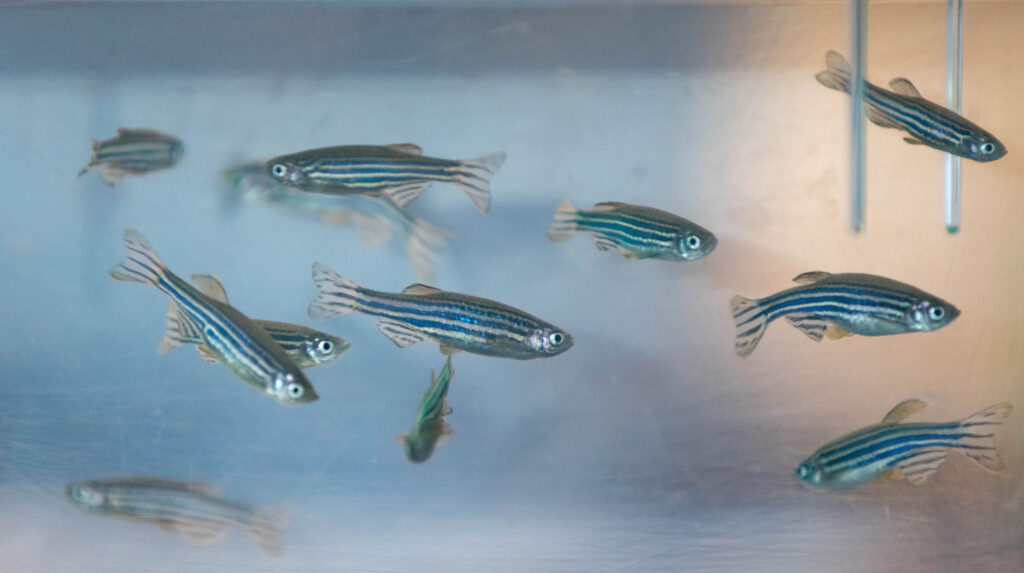
Our nation’s secondary science teachers including Texas teachers, who each impact ~150 students per year, are struggling to engage students in authentic real-world life science investigations. Teachers report that they lack the knowledge, skills, and resources to engage their students in authentic science investigations that spark their curiosity and provide avenues and develop scientific practices needed for career and college readiness.
To mitigate these challenges the Hajeri lab closely works with secondary science educators to empower them in using zebrafish (Danio rerio) as a robust teaching tool to engage learners in real-world scientific inquiries to explore life science concepts. Zebrafish are freshwater fish that are commonly found in local pet stores and are easily maintained in a classroom aquarium. Known to share 70% of their genes with humans, zebrafish are also at the forefront of biomedical research. The Hajeri lab leverages these benefits to excite educators and their students about scientific inquiry, and to help them understand the connections between science and the world they live in.
To empower educators to use zebrafish in their classrooms, the Hajeri lab is actively focused in:
- Identifying challenges faced by secondary science teachers to teach life sciences.
- Providing effective professional development to enhance secondary science teachers’ practice in using zebrafish to make science concepts engaging and comprehensible.
- Developing scientific protocols and apparatus to empower K-12 teachers in conducting cutting-edge experiments with limited resources.
- Studying the impact of zebrafish in improving STEM knowledge and workforce readiness skills in a diverse classroom of English speaking and Hispanic English (ELL) learners.
You must be logged in to post a comment.